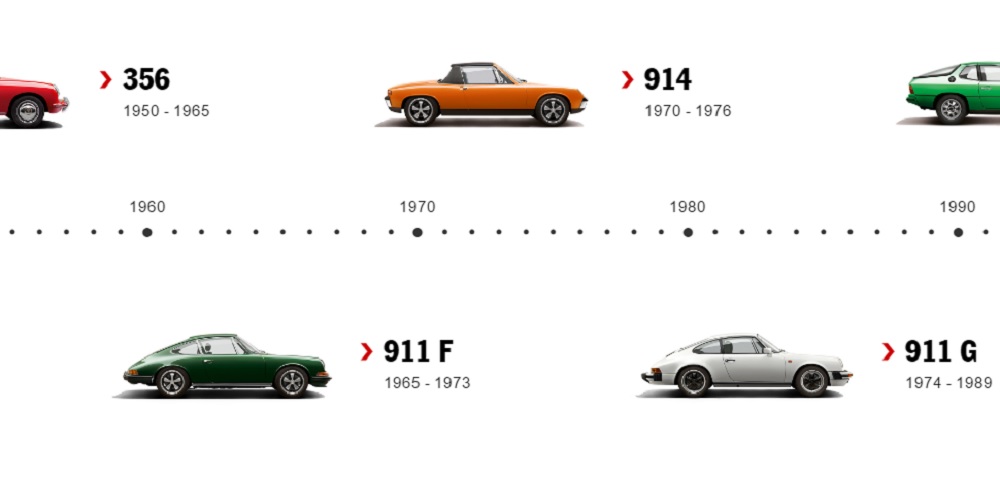How Did the G-Series Get Its Name?

What’s in a Name? In the Case of the G-Series,¬†Quite a Bit
We¬†suppose giving different generations of Porsche their own name makes it easier to identify among enthusiasts. A few days ago, however, a friend asked us why his impact bumper 911 is called a “G-series.” We¬†explained it to him. Then we figured that more people might be curious. So, it’s worth bringing to light here on Rennlist.
We all know what a “long-hood” 911 is, and we can easily identify a 964 or a 993, but the waters get pretty muddy when we start discussing the stuff that came between. What do you call a 1974-1989 car? We’ve always referred to them as “Impact Bumper” cars, but some Porsche folk call them “G-series.” It’s a colloquialism that evolved from Porsche’s internal codes for the car, and it’s to the point that even Porsche refers to a Carrera 3.2 as a “G-series” in promotional materials. As you can see from the timeline below, taken from¬†the Porsche Classic section of their website, they’re even retroactively referring to the long-hood cars as “F-series” because “G” is so ubiquitously known. It’s not specifically correct, and we’ll explain why.

In order to figure this out, we actually have to go back to 1968. For reasons unknown, Porsche had not ascribed a series production designation to 911s from 1965-1967, just referring to them as “911.” Presumably, as most of the car bodies were relatively identical in that time period, they didn’t see the need to give a production letter to any of those three years.
In 1968, however, a lot of things changed on the production run, with different door handles, different interior door panels, different engine requirements, dual-circuit master cylinders, wider alloy wheels, and reflective sidemarkers for the U.S. market (among other changes). As such, Porsche decided to make the 1968 model lineup known, at least internally, as the “A-series.” Each model year following that received a different letter designation: 1969 – B; 1970 – C; 1971 – D; 1972 – E; 1973 – F; and so on.

This means that in 1974, the series production run was called “G-series.” From Porsche’s perspective, at least initially, the “G” revision cars were produced exclusively from August 1973 until July 1974. It constituted the 1974 model year production only. In the factory on the day of¬†production, long-hood cars consisted of A, B, C, D, E and F Series. The G, H, J and K series cars are “mid-year” 911s from 1974 to 1977. ¬†Introduced in ’78, the 911 SC was known as the L series. Similarly, the ’79 model was an “M.” In 1980, however, Porsche dropped “Series” for “Programme.” It also started over with “A.”
A, B, C, and D Programme cars were all 911 SCs. The Carrera 3.2, introduced for 1984, started with E Programme, and extended through K Programme (again skipping over I). Initially, at least, this seems confusing. Hopefully this will help. For simplification among enthusiasts, G-series has come to signify all impact bumper cars. And F-series now apparently means anything that came before G. We hope it is now as clear as mud!

Chime in with your thoughts on the forum. >>
Photos: Bradley C. Brownell
